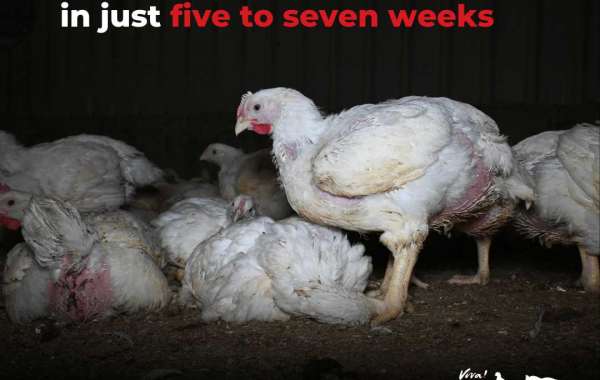Chickens are the most widely farmed animals in the world, raised primarily for meat and eggs. Despite their significant role in global agriculture, chickens often endure severe mistreatment and abuse in industrial farming systems. This article sheds light on the various forms of cruelty inflicted upon chickens and underscores the urgent need for reform to ensure their welfare.
Crowded Confinement
One of the most glaring issues in Chickens mistreatment farming is overcrowded confinement. In the meat industry, broiler chickens are often kept in massive, windowless sheds where tens of thousands of birds are crammed together. Each bird has little more than a square foot of space, making it impossible for them to express natural behaviors like dust bathing, foraging, or perching. The overcrowded conditions lead to high levels of stress, aggression, and injury among the birds.
Laying hens, kept for their egg production, often endure similar confinement in battery cages. These small wire cages restrict movement so severely that hens cannot stretch their wings or engage in most natural behaviors. The physical and psychological stress of such confinement leads to severe welfare issues, including feather pecking and cannibalism.
Rapid Growth and Health Problems
Broiler chickens have been selectively bred to grow unnaturally fast and large, with most reaching slaughter weight in just six weeks. This rapid growth rate causes numerous health problems, including skeletal disorders, heart failure, and respiratory issues. The birds' legs often cannot support their oversized bodies, leading to painful lameness and immobility.
Laying hens also suffer from health problems due to selective breeding for high egg production. These hens are prone to osteoporosis and fractures because their bodies are constantly depleted of calcium to produce eggshells. The intense production demands take a severe toll on their overall health and longevity.
Inhumane Handling and Transport
The handling and transport of chickens are fraught with cruelty. Workers often handle birds roughly, grabbing them by their legs or wings and cramming them into transport crates. During transport, chickens face long journeys without food or water, exposed to extreme temperatures and poor ventilation. Many birds suffer injuries or die from stress and exhaustion during these trips.
Upon arrival at slaughterhouses, the handling continues to be harsh and inhumane. Chickens are typically shackled by their legs and hung upside down on conveyor belts. They are then stunned before having their throats slit. However, due to high-speed processing lines and equipment failures, some birds are not adequately stunned and may be conscious during slaughter, experiencing immense pain and terror.
Mutilations and Physical Suffering
Chickens in the egg industry often undergo painful mutilations to prevent aggressive behaviors caused by overcrowding. Debeaking, where a portion of the beak is removed with a hot blade or laser, is a common practice. This procedure, typically performed without anesthesia, causes acute and chronic pain, as well as difficulty eating and drinking.
Psychological Distress
Chickens are intelligent and social animals capable of experiencing a range of emotions. The industrial farming environment deprives them of mental stimulation and social interactions, leading to psychological distress. The inability to engage in natural behaviors results in frustration and abnormal behaviors, such as feather pecking and repetitive movements. The mental suffering of chickens in such conditions is often overlooked but is a significant aspect of the cruelty they endure.
Environmental and Health Concerns
The intensive farming of chickens also poses significant environmental and health concerns. Large-scale poultry farms produce vast amounts of waste, which can contaminate water sources and contribute to air pollution. The overuse of antibiotics in chicken farming to prevent disease in crowded conditions has led to the rise of antibiotic-resistant bacteria, posing a serious public health risk.
Pathways to Reform
Addressing the mistreatment of chickens requires comprehensive reforms in farming practices and regulations. This includes banning battery cages, reducing stocking densities, and ensuring that chickens have access to natural behaviors and environments. Implementing pain relief for all mutilation procedures and improving transport and slaughter conditions are also critical steps.
Consumers play a vital role in driving change by choosing products from farms that adhere to higher welfare standards or by opting for plant-based alternatives. Public awareness and advocacy for stronger animal welfare laws can also help bring about significant improvements in the treatment of chickens.
Conclusion
The Chickens mistreatment in industrial farming is a pressing ethical issue that demands immediate action. From overcrowded confinement and health problems to inhumane handling and psychological distress, chickens endure immense suffering throughout their lives. By advocating for stronger animal welfare regulations, supporting ethical farming practices, and making informed consumer choices, we can work towards a future where chickens are treated with the compassion and respect they deserve.







